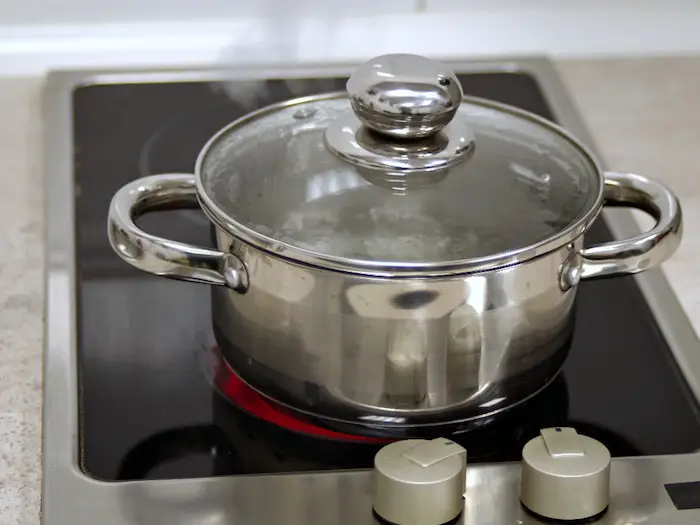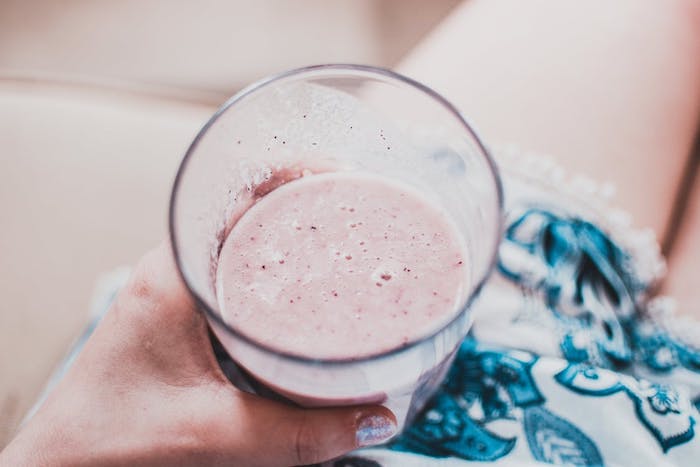Stainless steel utensils are favorite cookware both at home and in restaurants. They are associated with durability and tolerance to heat. Other than that, most high-quality stainless steel are non-reactive when exposed to heat or acid. Does that mean stainless steel utensils are oven-safe?
Can you put a stainless steel pot in the oven? Yes, you can. However, there are some conditions. If your pot is made entirely of stainless steel, it is safe to use it in an oven. Most quality stainless steel products are built to withstand temperatures of up to 500 degrees Fahrenheit. However, if your stainless steel pot has handles or any other parts made of plastic or wood, placing it in an oven is a bad idea.
We will discuss more on other conditions to consider before considering your stainless pot oven-safe. Keep reading to learn about conditions for an oven safe stainless steel.
Conditions to Consider Before Putting Your Stainless Steel Pot in the Oven
- First, check the handles of your stainless steel cookware. As mentioned above, some stainless steel pots have handles made of materials such wood and even plastic. If this is the case, you should avoid placing your stainless steel pot in an oven because while the stainless part of the pot can withstand the high temperatures of an oven, the wooden handle cannot. As such, placing it in an oven could cause the wood to split and for plastic, it could end up melting.
- Your pot is oven-safe at degrees of up to 500 degree Fahrenheit if it is purely made of stainless steel. On the other hand, if the handles have nay silicone or phenolic parts, it is only safe at 350 degree Fahrenheit maximum.
- If your stainless steel pot has a tempered glass lid, you should check the instructions to see if it is safe to use in the oven. Most of these pots are oven safe for temperatures up to 450 degrees Fahrenheit.
- Make sure your stainless steel pot is of high quality. It should be thick in order to withstand the high temperatures. Should you use a thin pot, then it may end up distorted
Other than distortion, placing a thin pan in the oven could end up charring your food. Food can also end up sticking on the pot if the temperatures are too high for a thin pot.
- The best way to be sure that your stainless steel is oven-safe is checking the manufacturer’s recommendations on the packaging. If you have lost the packaging, make efforts to contact the manufacturer through their website or any other channel. This also makes sure that your warrant stays valid for its time.
Alternatives of a Stainless Steel Pot
Should your stainless cookware fail to achieve the conditions above, what choice to do you have? Should you forget about using your oven? The good news is that there are alternatives to stainless steel pots that are oven-safe. The following are cookware materials that are safe to use in an oven.
- Silicone
As mentioned before, silicone made cookware can withstand temperatures as high as 450 degrees Fahrenheit. This applies to dishes with handles made of silicone or even if the entire dish is made of the same.
The best part of using silicone-made cookware is that they come in different designs and shapes. As such, they make your baking process more creative and fun.
- Metal
First, note that not all metals are oven safe. Even though metal can withstand high temperatures in the oven, some metals tend to react with the heat and produce chemicals that are toxic to our bodies.

However, there are good metals; these are stainless steel cast iron and aluminum. Since we have discussed stainless steel in length, let us look at cast iron. Cast iron is suitable for use in the oven since it can withstand the high temperatures. Other than that, cast iron does not affect the flavor of your food.
If you are concerned about the handles of cast iron, most cast iron are not made of plastic or wood, this makes them suitable for use in the oven. That said though, make a point of checking them before use.
Aluminum, on the other hand is a good metal for baking due to its good thermal conductivity. It tends to absorb heat quickly, distributing it evenly. This also means that your food will cook evenly since there will be no random heat points.
Other than good conductivity, aluminum is not easily corroded, enhancing it safe oven properties. Most aluminum cookware are anodized, making the metal non-reactive and safe for use under high temperatures without worrying that metal elements will be corroded into the food.
- Ceramics
Ceramic cookware can be metal dishes coated with silicone or dishes entirely made of ceramic. Whichever it is, it is suitable for use in the oven. This is because ceramic material tends to heat up gradually, meaning that your food will cook slowly but evenly.
Other than that, just like aluminum, ceramic cookware are non-reactive, making them the best option for baking acidic food as well as for high temperatures found in the oven.
Moreover, due to their shiny appearance, most people use ceramic cookware to bake and serve the food in the same cookware. This makes the workload of cleaning dishes easier and serving your food more presentable.
That said though, not all ceramics are oven safe. Therefore, make sure you check that the manufacturer recommends it for use in the oven. If your ceramic cookware is glazed or has adhesive designs, then you should not use it in the oven.
See Also: Why Does My New Oven Smell Like Burning Plastic?
Making your Cookware Oven Safe
If all the above alternative materials are out of your reach for any reason, there is a hack to make your cookware oven safe.
How to make Cookware Oven Safe
There are several hacks to see to it that you use your unsafe cookware in the oven yet safely. The first step is by understanding the temperature limits of your individual cookware. In most pans and pots, the temperatures are indicated at the bottom of the pan.
So, if the problem is the handles of your cookware, you can wrap them in a double layer of wet paper towels then cover them with another double layer of aluminum. This hack is most suitable for cast iron skillet and stainless steel handles.
The wet paper towels help to keep the temperatures of the handle low, making sure it is not damaged. Note that the wet paper towel hack doesn’t work for wooden or plastic handles.
Another method of making your cookware oven safe is by replacing your cookware handles with silicone handles. Silicone handles can withstand temperatures of up to 450˚, making it suitable for use in the oven.
Alternatively, you can remove the plastic and wooden handles and use the cookware without or replace them with stainless steel.
Related Questions
Are glass cookware oven safe?
It is a common belief that glass cookware should not be exposed to extreme heat, leave alone being placed in an oven. However, did you know that there is a specific glass that is used to make cookware that is oven safe? This type of glass is mostly usually tempered or cookware made of borosilicate glass.
That said though, even with this glass, there are some guidelines to follow when using it in an oven. The guidelines are centered on making sure there are no heat shocks exposed to the glass cookware. That mean the cookware should not be placed straight into the oven, rather it should first be exposed to some level of heat then gradually to the oven. Please still check the manufacturer’s recommendations.
When removing the glass cookware, do not place it on a surface that will conduct the heat away immediately, such as a wet surface. Doing these two things may cause the glass to crack or break therefore damaging the cookware.
Over and above, most glass cookware will indicate if they are oven safe or not on their packaging instructions. Also note, while else the glass cookware may be oven safe, parts of it such as handles and lids may not be. This means that you should not use the specific glassware in the oven
Can I use my non-stick pan to bake?
No, you should not use nonstick pans for baking or for any other reason in the oven. Nonstick pans usually have a coat of Teflon, which makes them non-sick. When exposed to high temperatures like those found in an oven, the end produces toxic fumes, which are a result of the coating burning. So what is the problem?
To start, as mentioned these fumes are toxic. That means that when they get into contact with your food, eating it equals to taking in toxic chemicals. Other than that, since the coating will be burnt, it means your non-stick pan will wear out faster. Therefore, avoid using your nonstick cookware for baking.
See Also:
Can You Put Foil In An Oven Toaster
4 Best Dutch Ovens For Deep Frying
How To Wash Silicone Oven Gloves (Here’s The Answer)


